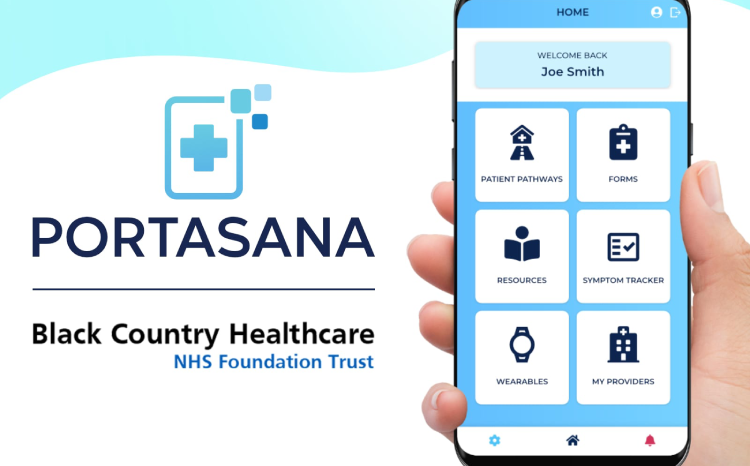Joe’s View: Finally – Comparing Software
- 10 September 2021

In a column for Digital Health, Joe McDonald, encourages everyone to share their joy and frustration with electronic patient records (EPRs) as part of a nationwide survey.
So, what does good look like? Does it look like an episode of BBC sitcom “W1A” featuring The Director of Better? Or does it look like a serious attempt to improve the lot of NHS IT users.
Regular readers or those of you know me from Twitter as @CompareSoftware, may recall the smoking ruin of my first attempt at software comparison ten years ago, Compare the Software, and will know how deadly serious I am about the usability of NHS IT systems. Poor systems mean time wasted and unsafe care.
Subsequently, over the years I helped run two helpful but unfunded (‘amateur’ seems harsh) software user experience surveys but ultimately these could only ever be snapshots and what was clearly required was a policy commitment to the continuous improvement of NHS IT. Happily I can report that this policy is now appears to be falling into place.
Nationwide survey
You can say what you like about NHS Alphabet, and I frequently have, but over the last few months, I’ve been working with colleagues in NHSX and a number of practitioners to develop the first ever properly professional, nationwide usability survey looking at clinicians’ experience of using electronic patient records (EPR) as part of the “What Good Looks Like” programme announced this week by NHS .
The survey, launched last month, has an initial focus on professionals working in mental health, community and ambulance trust roles, before expanding out to cover other roles within acute settings later this year. Over 3,500 people have completed it already but that is not enough. Too few and it may be dismissed. Don’t let that happen.
So why did I agree to get involved? Well, first and foremost, because you are here reading this, I know you know how important EPRs are as a way of enabling safe, effective and joined-up care. Yet we have struggled historically to gather a robust evidence base answering the fundamental “what” and “how” questions: what EPR systems work best, and how do we get the most out of them, what is the cost per user per year of system X versus system Y?
Answering those questions starts now.
Full EPR picture
This study will, for the first time, give us the full picture of how EPR user experience varies across the country. And that’s going to be invaluable on two fronts.
For individual organisations, it will give them a rich source of user feedback to take forward in exploring how they can improve their systems locally.
And at a national level, it will directly inform the work NHSX will do to support NHS organisations and also stimulate and challenge the market to do better.
Yet there’s more to it than that.
The survey has been developed in partnership with an international research agency called KLAS – which, via a coalition of health organisations known as the Arch Collaborative, has surveyed more than 200,000 clinicians in 250 health organisations about their EPR experience. Very definitely not amateur.
What’s emerged from this is a set of proven indicators that characterise what makes an EPR successful within an organisation. Only part of it is about the quality and functionality of the tool itself, we know that from previous efforts notably by Darren McKenna and Marcus Baw. What matters just as much are the environmental factors around the EPR:
- Is the training and support offer good enough to help clinicians get the most out of the system?
- Has the EPR been configured effectively to optimise the way it supports the organisation’s needs?
- Are there good cultural foundations in place, with clinicians and technical staff feeling shared ownership of the process of improving EPR use?
And here’s the best bit.
By replicating KLAS’s international research across the country, we can draw upon a proven evidence base showing how to improve user experience. And that can be incredibly powerful.
It can help us assess how organisations are currently performing against these indicators, pointing the way to how these might be improved.
It will give us fully comparable data, allowing us to benchmark against leading organisations around the world to learn how to improve.
And, above all, it allows us to combine the principles of good UX with a robust improvement science to support the onward development and use of this critical clinical tool.
We need you!
But I need your help to make it happen, I need technology leaders to be all-in on this journey, advocating for the benefits of this research and mobilising clinicians to participate at a time when we know they are extremely busy.
The survey will take just 8 minutes of a busy clinician’s day but will collectively give us the data and insights to improve EPR systems for the long term. And that’s got to be worth the effort in my book. This is the first time “the centre” have taken a direct measure our experience as end users of NHS IT, if we don’t take this opportunity with both hands it may not come around again and to some degree we will get the EPRs we are prepared to tolerate without complaint.
Sitcom? Or the start of a new user focussed era for NHS IT? You get to decide. Hit “send to all” with this survey. It closes on the 10th of September.
Declaration of interest: The survey has been commissioned by NHSX and with the contract between Ethical Healthcare and KLAS. Joe McDonald is a principal consultant for health system collaboration at Ethical Healthcare.





2 Comments
Survey was a great idea, unfortunately it seems to have been written by an American company who do not seem to know much about the language / structure of MH services in the UK. Some of the questions don’t make a lot of sense
An acknowledgment needs to be made of the dataset requirements that drive the design of EPR systems. So many datasets are wedded to an acute focussed single speciality, consultant based ‘refer, diagnose,treat’ model, despite what they are named.
These datasets rapidly fall apart when faced with a multidisciplinary team that are providing truly holistic care for a range of patient conditions using a wide variety of modalities, but because the datasets are mandated, they require work arounds, or for the system to be configured in a way that is not optimal, but puts a tick in the box for dataset compliance.
I’ve taken part in some research commissioned by NHS D around what i community nurses required from systems, yet the researchers who interviewed me had no idea of the dataset landscape and the effect it had on nurses, what the nursing process is, nor what a nursing model is and how that impacts the way that care is planned and evaluated.
This doesn’t even get into the realms of local commissioner requirements, which very often are concerned with points on a pathway, but there is no concept of this within a dataset, not has it been articulated to suppliers, so it is not easily
Implemented within software.
Software is hard, and there is no easy way to completely change a workflow of a system that is being used live by many users across many trusts. Think more open heart surgery than a car into a garage, yet many of those who are critical of suppliers have no awareness of the software lifecycle from design specification through to underlying data structure, to being installed and used by the customer’s end users.
Lastly, on the survey one of the lines is about the ‘IT department’ configuring the system, as I’ve commented elsewhere that line coming from the centre makes the jobs of clinical digital specialists harder as it reinforces that EPRs are just an IT system, and not a core clinical tool from providing safe, effective, and quality care.
Comments are closed.